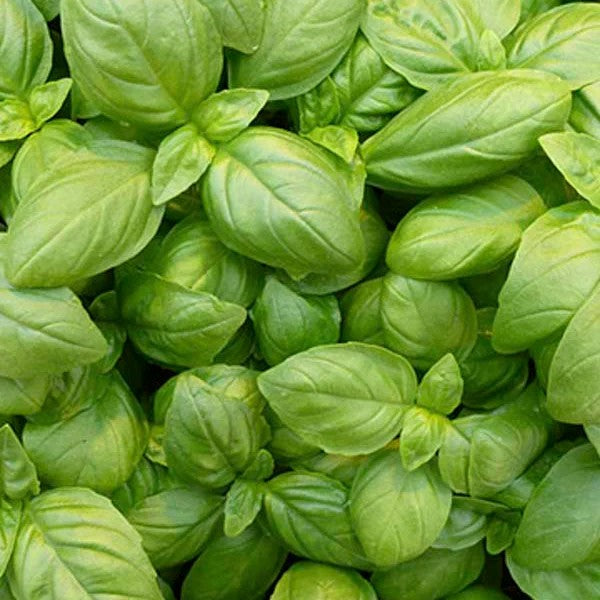Basil Eleonora
Basil Eleonora
Couldn't load pickup availability
Short Summary for Basil Eleonora
Basil Eleonora is a premium basil variety known for its rich, aromatic flavor and large, dark green leaves. Perfect for culinary use, this variety thrives in warm, sunny conditions and is ideal for both garden beds and containers. By following the Basil Eleonora planting guide, gardeners can ensure a successful crop of flavorful basil for use in fresh dishes, sauces, and pesto.
Planting Instructions for Basil Eleonora
General Sowing Time: Start sowing Basil Eleonora seeds indoors 6–8 weeks before the last expected frost or sow them directly outdoors once the soil has warmed to 18-21°C.
Position: Choose a sunny location with full sun exposure for at least 6–8 hours a day, as
Basil Eleonora requires warmth and sunlight to develop its rich flavor.
Suitable Space: Select well-drained, fertile soil that is rich in organic matter for the best results. Space plants 20-30 cm apart to give each basil plant enough room to grow and spread.
Sow Depth: Sow the seeds at a depth of 0.5 cm for optimal germination and growth.
Spacing: Space Basil Eleonora plants 20-30 cm apart to ensure adequate airflow and room for growth.
Height: Basil Eleonora typically grows to a height of 30-45 cm, producing large, fragrant leaves that are perfect for culinary uses.
Germination: Seeds generally germinate in 5–10 days when kept at temperatures between 18-21°C.
Days to Bloom: Basil Eleonora will bloom in approximately 60–70 days, but it is best to pinch off flowers to encourage continued leaf production and improve flavor.
Temperature: Ideal growing temperatures for Basil Eleonora range between 18-21°C during the day, with slightly warmer temperatures for optimal flavor development.
Watering: Water regularly, keeping the soil evenly moist but not soggy. Basil prefers moist conditions but requires good drainage to avoid root rot.
Fertilizing: Use a balanced, organic fertilizer once a month to encourage healthy growth and robust leaf production. Avoid over-fertilizing, as too much can affect the flavor.
Pests/Diseases: Watch for pests like aphids and spider mites. Fungal diseases such as downy mildew can also affect basil, so ensure good air circulation and treat with organic fungicides if necessary.
By following these Basil Eleonora planting instructions, you’ll have a thriving crop of aromatic basil leaves that will enhance your culinary creations.
Share


